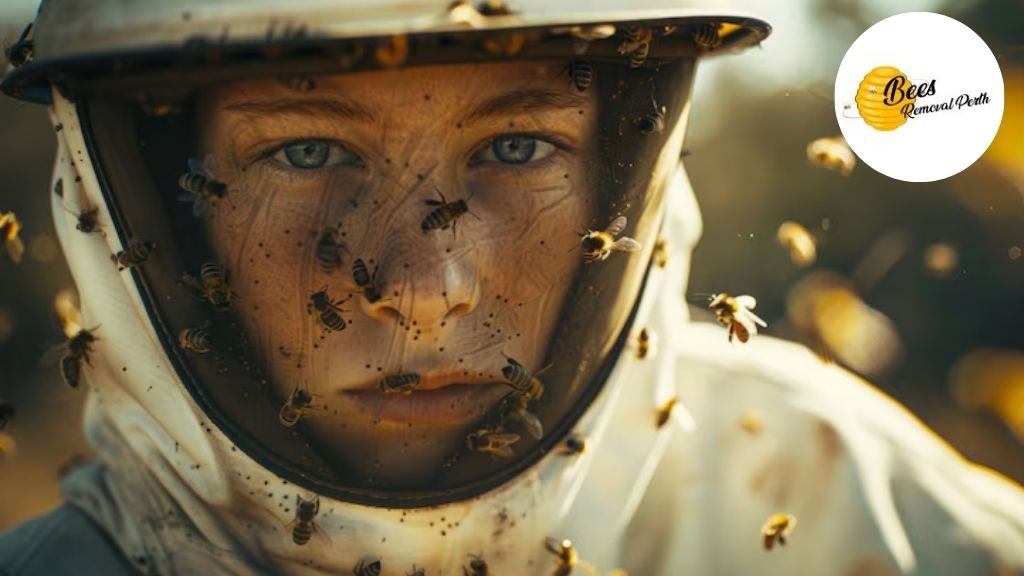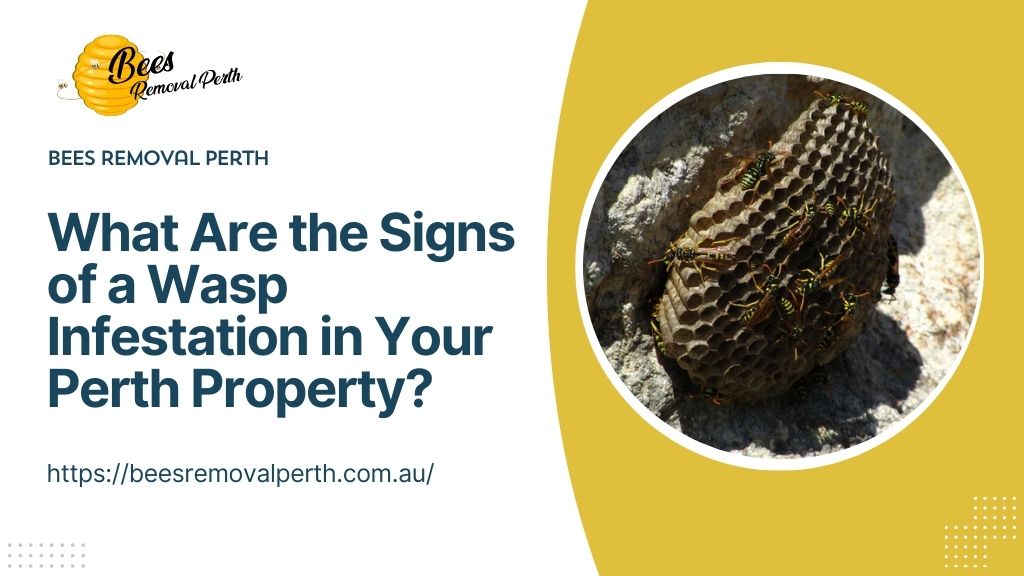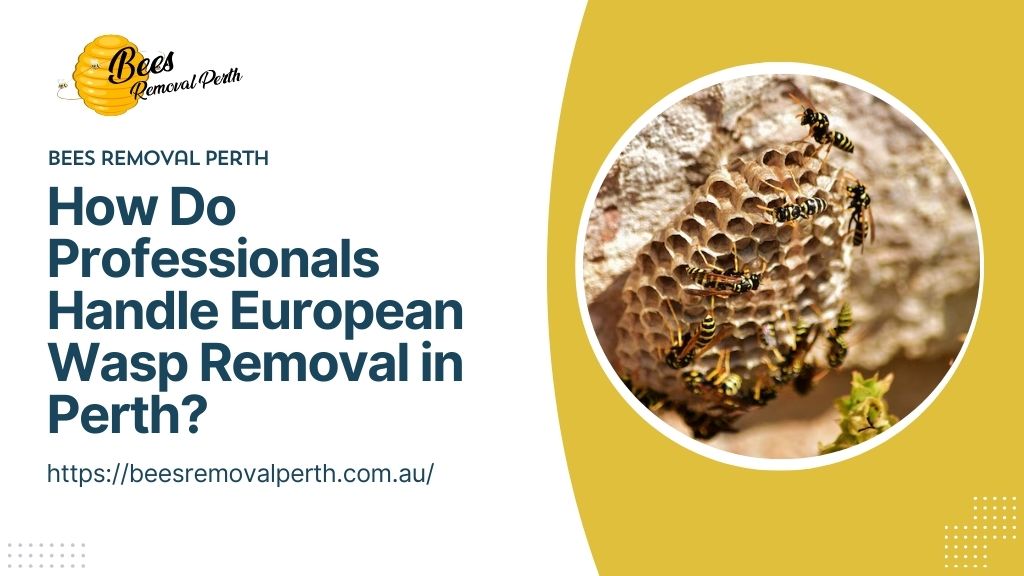Wasps are more than just a nuisance—they can become a serious problem if they start nesting around your Perth home.
Each year, local pest control services report a spike in wasp infestations, especially during the warmer months. The European wasp, in particular, is known for its aggressive behaviour and painful sting.
Many homeowners don’t realise they have a nest until wasps start flying indoors or someone gets stung. Spotting the early signs is key to preventing the issue from getting worse.
From unusual buzzing sounds to increased wasp activity outside, knowing what to look for can help you act quickly and safely. In this blog, we’ll explain the most common signs of a wasp infestation and what you can do to protect your home.
Why Are Wasps a Problem in Perth?
Common Wasp Species in WA
Perth is home to several wasp species, but the most concerning are the European wasp and the paper wasp.
The European wasp is especially aggressive and more likely to sting multiple times if disturbed.
Unlike bees, they don’t die after stinging, which makes them more dangerous around kids and pets. Paper wasps, while less aggressive, can still deliver painful stings if their nest is threatened.
Both species are attracted to food, water, and shelter, which makes Perth homes an ideal spot for building nests.
Why Perth Homes Attract Wasps
Wasps look for warm, dry places to build their nests, and many Perth properties offer the perfect environment. Roof spaces, wall cavities, garden sheds, and outdoor furniture are common nesting areas.
With long summers and mild winters, Perth’s climate supports year-round wasp activity, especially in shaded or undisturbed corners of the yard—similar to areas that may also require bee removal Perth services
Seasonal Wasp Activity
Wasp activity in Perth tends to rise between late spring and early autumn, peaking during the summer months (December to February).
During this time, wasps are most active, foraging for food and defending their nests. Spotting the signs early in the season is key to keeping your home safe.
Top Signs of a Wasp Infestation

Frequent Wasp Sightings
One of the first signs of a wasp infestation is seeing wasps regularly, especially near doors, windows, or light sources. If you notice wasps hovering around your home daily, it could mean there’s a nest nearby.
Outdoors, wasps often gather around garden sheds, fence lines, or roof edges. You may also see them flying in and out of a small opening, which could be the entrance to a hidden nest.
While a few wasps might not seem like a big deal, consistent sightings in the same area are worth investigating. Early detection helps prevent stings and stops the nest from growing larger and harder to remove.
Visible Wasp Nests
Spotting a nest is one of the clearest signs of an infestation. Wasp nests are often round or oval and made from a grey, paper-like material. They can be as small as a golf ball or as large as a football, depending on the time of year and the number of wasps inside.
Common places to find nests include under eaves, inside roof cavities, wall voids, tree branches, and even behind outdoor furniture or light fixtures.
If you find a nest, avoid disturbing it. Wasps become aggressive when they feel threatened, and a sting can be painful—or dangerous for people with allergies.
Chewed Wood or Paper
Wasps use chewed-up wood and plant fibres to build their nests. If you notice small scratch marks or rough patches on your outdoor wood furniture, deck rails, fence posts, or garden beds, it could be a sign wasps are collecting materials for their nest.
These marks may appear soft or stripped, as if something has been scraping the wood. Unlike termites, wasps don’t eat the wood—they use it to make their unique papery nests.
While this damage is usually minor, it’s a strong indicator that wasps are nesting nearby and actively expanding their colony.
Buzzing Sounds in Walls or Roof
If you hear a faint but steady buzzing or humming sound inside your walls, ceiling, or roof, it might mean a wasp nest is hidden in the structure. This sound is usually caused by the movement and activity of wasps inside their nest.
Unlike household noises, the buzzing will likely stay in one area and may get louder over time.
Wasps often choose quiet, enclosed spaces like roof voids or wall cavities for nesting, especially if they’re sheltered from the weather. Ignoring these sounds can lead to a larger problem, so it’s important to check it out as soon as possible.
Aggressive Wasp Behaviour
If you’ve noticed wasps acting more aggressive around certain parts of your yard or home, there could be a nest nearby. Wasps are known to defend their nests and may sting if they feel threatened.
You may also see them chasing people or pets, especially near outdoor bins, compost, or sugary food. In some cases, people get stung simply for walking too close to a hidden nest.
If wasps are gathering in the same area repeatedly and seem more hostile than usual, take it seriously. This behaviour is a clear sign of an established colony that should be professionally removed.
Risks of Ignoring a Wasp Infestation
Ignoring a wasp infestation can lead to serious health and safety risks. One of the biggest dangers is the risk of allergic reactions to stings. For people with allergies, even one sting can trigger anaphylaxis, a life-threatening condition that requires immediate medical attention.
As the nest grows, the number of wasps increases, making your home or yard less safe. Large nests inside wall cavities or roof spaces can also cause minor structural damage over time.
Wasps chew through materials to expand their nests, which may weaken wooden panels or insulation.
Young children and pets are at the greatest risk because they’re more likely to accidentally disturb a nest. A single sting can be painful—but multiple stings can be dangerous, especially if the wasps feel threatened.
That’s why a professional Bees Inspection is crucial to identify and safely handle any nests before they pose a threat.
What to Do If You Suspect an Infestation
If you think there’s a wasp nest on your property, the first step is to stay calm and avoid disturbing it. Don’t swat at the wasps or try to remove the nest on your own without understanding the risk involved.
While there are DIY sprays and traps available, they’re usually only effective for small or early-stage nests. For larger infestations, it’s much safer to call a professional. Trying to handle it yourself may provoke the wasps, increasing the chance of stings.
If you’re inspecting the area, wear protective clothing and observe from a safe distance. Look for repeated wasp activity or the sounds of buzzing in walls or ceilings—but never poke or spray a nest without proper gear and training.
Professional Wasp Control Services in Perth
Hiring a licensed pest controller is the safest and most effective way to deal with a wasp infestation. Professionals have the right tools, experience, and safety equipment to locate and remove nests without putting anyone at risk.
A standard service usually includes a full inspection of your property, identification of the wasp species, and safe nest removal. They can also advise on preventative steps to stop wasps from coming back. Many pest control services in Perth now offer eco-friendly options, using non-toxic sprays that are safe for pets and the environment.
Using a professional means you avoid the stress and danger of dealing with aggressive wasps yourself—and you get peace of mind knowing the job is done properly.
Preventative Tips to Avoid Future Infestations
Preventing a future infestation starts with making your home less inviting to wasps. Seal any cracks or gaps in walls, roof tiles, and window frames to block entry points. Check for holes around vents, gutters, and pipes where wasps could slip inside.
Conduct regular inspections of your yard and roof, especially in spring when wasps begin nesting. Trim back overgrown shrubs, clear away old timber, and clean outdoor furniture that may attract them.
Wasps are drawn to food and water, so keep bins tightly sealed and avoid leaving sugary drinks or scraps outside. Installing flyscreens and keeping compost areas clean can also help.
Lastly, do seasonal checks before summer arrives to catch any early nests before they become a serious issue.
Conclusion
Spotting the early signs of a wasp infestation can help you avoid bigger problems down the track. From seeing frequent wasps around your home to hearing buzzing in your walls, these warning signs shouldn’t be ignored.
Wasps can be more than just a nuisance—they pose real risks to your health and safety, especially for kids, pets, or anyone with allergies.
By knowing what to look for and acting quickly, you can stop a small problem from turning into a serious threat.
If you’ve noticed any of the signs mentioned, it’s smart to speak with a local pest control expert.
They can handle the issue safely and help prevent wasps from coming back. For more details, tips, and prevention advice, be sure to explore the full blog.

